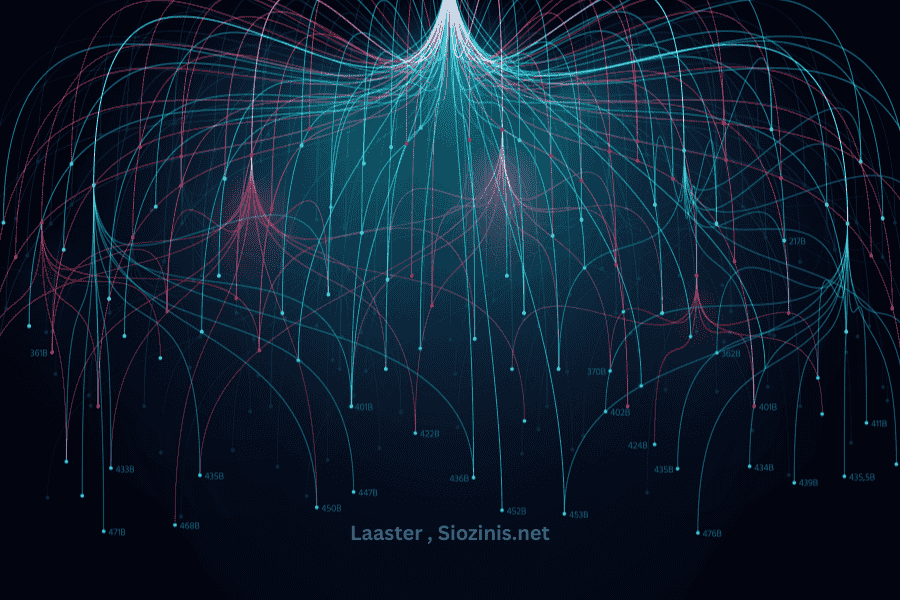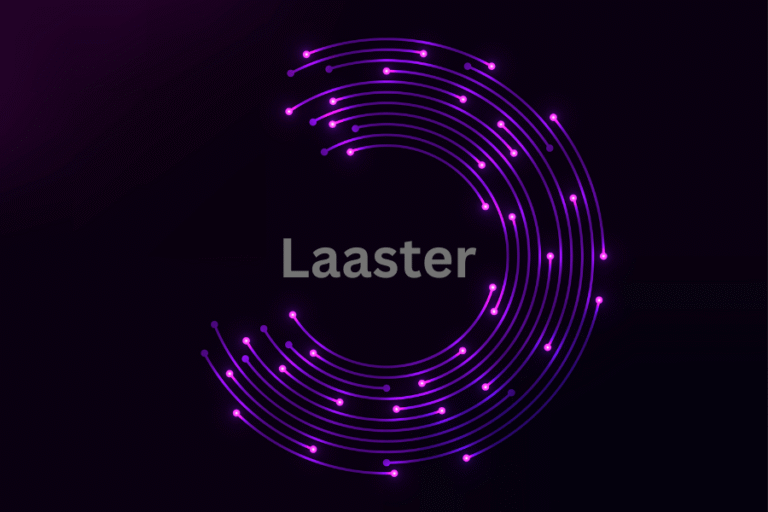Technology today moves at lightning speed, and digital communication is at the heart of it. From instant messaging to e-commerce checkouts, users expect low latency, real-time processing, and smooth performance. That’s where this technology steps in. More than just another framework, it’s is being explored as the future of digital communication, offering innovation, scalability, and security. Businesses, developers, and everyday users alike are asking: What is Laaster, and how does it work? This guide unpacks the concept, its benefits, and why Laaster may redefine how we connect online.
What is Laaster?
The word Laaster is new to many, which naturally raises the question: What does Laaster mean? While “laster” traditionally referred to a shoemaking tool, This technology has a different identity. In today’s digital world, it represents a framework for innovation, speed, and smarter communication systems. Some see it as the future of digital communication, blending low latency with secure, real-time processing. Others view it as a modern platform that evolves beyond existing tools like CDNs or basic messaging frameworks. By defining it clearly and showing how it differs from alternatives, businesses and developers can better understand its role in creating faster, more reliable online experiences.
Core Features of Laaster Technology
Laaster technology is designed to address the challenges of speed, performance, and reliability in digital communication.
Unlike traditional frameworks, it integrates multiple smart features that make it a future-ready solution for businesses and users alike.
| Feature | Description | Key Benefit |
|---|---|---|
| Low Latency | Reduces waiting time for user actions such as page loads, video calls, and online purchases. | Instant results and smoother digital experiences. |
| Real-Time Processing | Handles live data instantly to support messaging, streaming, and gaming. | Eliminates lag and ensures real-time responsiveness. |
| Smart Routing | Optimizes data flow by selecting the fastest, most efficient path. | Improved performance and reliability. |
| Auto-Scaling | Automatically adds server resources during traffic spikes. | Stable systems even under heavy demand. |
| Security | Provides encryption and built-in safeguards against digital threats. | Protects sensitive data for users and businesses. |
Together, these features create faster, smarter, and safer systems for websites, apps, and modern enterprises.
How Laaster Works (Step-by-Step Process)
Understanding how Laaster technology works helps explain why it’s being called the future of digital communication. At its simplest, it acts as the invisible engine behind websites, apps, and platforms, keeping them fast, secure, and scalable.

- User Request: A click, message, or purchase starts the process.
- Smart Routing: Laaster chooses the quickest path for data, avoiding delays.
- Real-Time Processing: Information is handled instantly, ensuring live updates without lag.
- Low Latency Response: Results reach the user in milliseconds, improving overall experience.
- Auto-Scaling: If thousands join at once, Laaster automatically adds resources.
- Security Layer: Encryption and protective measures ensure safe communication.
This step-by-step workflow shows how it combines low latency, real-time processing, and smart routing to deliver seamless, high-performance systems. For businesses and developers, it means happier users and platforms built to handle growth without breaking.
Use Cases of Laaster
What makes Laaster technology powerful is how it adapts across industries, solving real-world problems with speed, reliability, and smart scalability.
- E-Commerce: Slow checkout pages hurt sales. With low latency and real-time processing, Laaster helps online stores deliver fast product searches, instant cart updates, and smoother transactions, improving conversions.
- Gaming & Streaming: Lag ruins user experience. Laaster’s smart routing and auto-scaling ensure players and viewers enjoy seamless, real-time action without buffering. Much like the innovations explored in Echostreamhub.
- Healthcare: Real-time data sharing is critical. It supports secure patient monitoring, telehealth, and rapid medical responses.
- Finance: From mobile banking to stock trading, it makes transactions secure, quick, and scalable.
- Communication Platforms: Video calls, messaging apps, and live collaboration tools benefit from Laaster’s ability to handle heavy traffic while maintaining quality.
By delivering secure, real-time digital communication, Laaster proves its value across multiple sectors, making it a versatile framework for modern systems and businesses.
Laaster vs Existing Solutions
When exploring new frameworks, many ask: How does Laaster technology compare to what we already use?
The key differences lie in performance, flexibility, and scalability.
The table below highlights how it stacks up against traditional solutions.
| Technology | Strengths | Limitations | Laaster Advantage |
|---|---|---|---|
| Traditional CDNs | Speeds up static content delivery | Weak in handling real-time processing | Combines low latency with live data handling beyond static caching |
| WebSockets / HTTP3 / gRPC | Enable real-time communication | Require complex setup; scaling is limited | Integrates smart routing, auto-scaling, and built-in security for simplicity and scalability |
| Realtime Frameworks (e.g., Firebase, Pusher) | Efficient for specific real-time tasks | Narrow scope, limited to certain industries | Holistic framework combining speed, security, and scalability across multiple industries |
In short, Laaster isn’t here to replace every solution but to enhance digital communication systems with a future-ready architecture.
Its combination of performance optimization and reliability gives it an edge in modern applications.
Benefits & Business Value
The true strength of Laaster technology lies in the measurable value it brings to businesses and end users. By focusing on low latency, real-time processing, and smart routing, Laaster creates digital platforms that are not only faster but also more dependable.
- Improved User Experience: Pages load quickly, video calls run smoothly, and apps respond instantly reducing frustration and bounce rates.
- Higher Conversions: In e-commerce, even a one-second delay can hurt sales. Laaster’s speed and stability directly boost conversion rates.
- Scalability on Demand: With auto-scaling, businesses can handle sudden traffic spikes without downtime or performance loss.
- Cost Efficiency: Smarter use of resources means reduced infrastructure costs and better ROI.
- Enhanced Security & Compliance: Built-in encryption and safeguards keep data safe, ensuring trust in sensitive industries like finance and healthcare.
In short, this helps businesses grow by offering faster performance, better scalability, and long-term cost savings all while ensuring reliability and security.
Challenges & Limitations
While Laaster technology offers impressive advantages, it’s not without challenges. Like any framework for digital communication, businesses need to consider its limitations before adoption.
- Complex Setup: Implementing Laaster requires technical expertise. Teams must understand how to integrate real-time processing, smart routing, and auto-scaling into existing systems.
- Initial Costs: The investment in infrastructure, training, and deployment can be high compared to traditional solutions. Smaller businesses may hesitate.
- Cloud Dependence: Many Laaster features rely on cloud computing. This raises concerns about vendor lock-in and ongoing costs.
- Maintenance Requirements: To maintain low latency and security, regular updates and monitoring are necessary, which can strain IT teams.
- Compliance Risks: Industries like healthcare and finance must ensure Laaster aligns with strict data privacy regulations.
These challenges don’t outweigh the benefits, but they highlight the need for careful planning. When deployed strategically, Laaster’s limitations can be managed, allowing organizations to unlock its full potential.
Future of Laaster Technology
The future of Laaster technology looks promising as digital systems continue to demand low latency, real-time processing, and stronger security. What began as an innovative concept is quickly evolving into a future-ready framework with even broader possibilities.

In the coming years, we can expect this to integrate more deeply with AI-driven automation, allowing smarter routing and predictive scaling that adjusts before performance issues appear. Global scalability will also play a role, ensuring businesses can deliver seamless services across continents.
Another key area is data privacy and compliance. With rising concerns about user trust, it is likely to adopt stricter privacy-first models, supporting regulations like GDPR while maintaining performance. Additionally, its potential use in remote work tools, healthcare platforms, and financial systems suggests that Laaster will continue shaping how people connect and collaborate online.
Simply put, the future of Laaster lies in making digital communication faster, safer, and smarter for both businesses and everyday users.
FAQs
Q: What does Laaster mean?
A: Laaster is a modern framework designed to improve digital communication by focusing on low latency, real-time processing, and scalability.
Q: Is Laaster a tool, a platform, or a concept?
A: It functions as a technology framework. While not limited to a single tool, it combines smart features like auto-scaling and smart routing that make digital systems faster and more secure.
Q: How does Laaster compare to existing solutions?
A: Compared to traditional CDNs or protocols like WebSockets, Laaster offers a more holistic approach. It integrates performance optimization, built-in security, and cloud-based scalability, reducing complexity for businesses.
Q: What industries benefit most from Laaster?
A: Laaster is ideal for e-commerce, gaming, streaming, healthcare, and finance, where real-time performance and secure communication are critical.
Q: Can businesses adopt Laaster today?
A: Yes, though it may require technical planning and investment. When implemented correctly, Laaster delivers significant improvements in user experience, reliability, and ROI.
Conclusion
The journey of Laaster technology is only beginning, yet its impact on the future of digital communication is already clear. By combining low latency, real-time processing, smart routing, auto-scaling, and strong security, Laaster addresses the challenges businesses face in building fast, reliable, and user-friendly systems.
While setup, cost, and maintenance may be hurdles, the benefits improved performance, scalability, and long-term ROI make it a forward-looking investment. As industries continue to demand seamless digital experiences, It is positioned to become a key framework for websites, apps, e-commerce, gaming, healthcare, and beyond.
For businesses, the road ahead is about embracing innovation. For users, it’s about enjoying faster, safer, and smarter communication. It may not just be a tool it could be the foundation of how we connect in the digital world of tomorrow.


